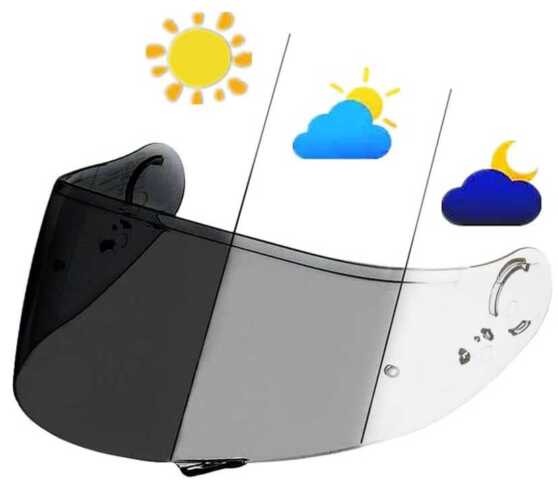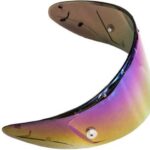Introduction

Photochromic helmet visors, also known as transition visors, represent a remarkable advancement in protective eyewear technology. These visors adapt to changing light conditions, providing optimal visibility and safety for motorcyclists, pilots, and other helmet-wearing professionals. In this comprehensive guide, we will delve into the science behind photochromic visors, their material composition, benefits, and practical applications.
Understanding Photochromic Technology
How Do Photochromic Visors Work?
Photochromic visors utilize a sophisticated material that responds to ultraviolet (UV) light. When exposed to sunlight, the visor’s molecules undergo a reversible chemical reaction, causing the visor to darken. Conversely, when UV light diminishes (such as when entering a tunnel or transitioning from daylight to dusk), the visor gradually lightens. This dynamic adjustment ensures clear vision under varying lighting conditions.
Material Composition
- Photochromic Dyes:
- The heart of a photochromic visor lies in its dyes. These organic compounds contain photochromic molecules that change their structure when exposed to UV radiation.
- Common photochromic dyes include silver halides, naphthopyrans, and fulgides. Each type exhibits distinct properties, such as response speed and color range.
- Matrix Material:
- The dyes are embedded within a matrix material, typically a polycarbonate or trivex substrate. Polycarbonate is lightweight, impact-resistant, and widely used in helmet visors.
- UV Absorption and Activation:
- When UV light strikes the visor, the photochromic molecules absorb energy and transition to their darkened state.
- As UV intensity decreases (e.g., when moving indoors), the molecules revert to their clear form.
Benefits of Photochromic Helmet Visors
- Adaptive Sun Protection:
- Photochromic visors automatically adjust to sunlight, reducing glare and preventing eye strain.
- Riders and pilots no longer need to switch between clear and tinted visors as lighting conditions change.
- Safety Enhancement:
- Clear vision is critical for safe riding and flying. Photochromic visors maintain optimal visibility, even during sudden transitions from bright to dim environments.
- UV Shielding:
- Photochromic visors provide UV protection, safeguarding the eyes from harmful rays.
- Prolonged UV exposure can lead to conditions like photokeratitis and cataracts, making this feature essential.
- Aesthetics and Convenience:
- Riders appreciate the convenience of not carrying multiple visors.
- The subtle darkening effect adds a touch of sophistication to the helmet’s appearance.
Practical Applications
- Motorcycling:
- Photochromic visors enhance safety during daytime rides. They adapt seamlessly to changing light conditions, allowing riders to focus on the road.
- Aviation:
- Pilots benefit from photocromic visors during takeoff, landing, and flight phases.
- Clear vision is crucial for reading instruments and spotting runway markers.
- Industrial Helmets:
- Workers in construction, mining, and other fields can benefit from photochromic visors.
- These visors ensure comfort and safety in varying outdoor conditions.
Maintenance Tips
- Cleaning:
- Use a soft microfiber cloth to clean the visor.
- Avoid abrasive materials that could scratch the surface.
- Storage:
- Store the helmet in a cool, dry place away from direct sunlight.
- UV exposure over time may degrade the photochromic properties.
Conclusion
Photochromic helmet visors exemplify innovation at the intersection of safety and convenience. Whether you’re cruising on your motorcycle or soaring through the skies, these visors adapt to your surroundings, ensuring clear vision and peace of mind.

